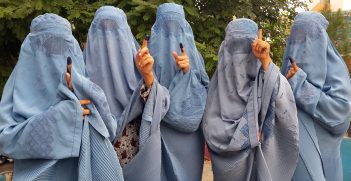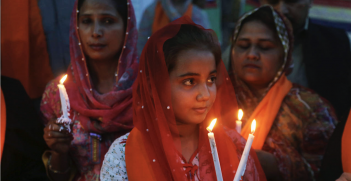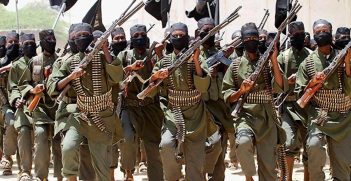Afghanistan's Progress Towards Reconciliation: Some Good and Bad News

Months of peace negotiations in Afghanistan bring good and bad news. Despite consolidation of a power sharing agreement between political rivals and the formation of a council for peace, the coronavirus and a contest for Taliban leadership will defer the commencement of peace talks.
By any measure, the peace process to achieve reconciliation in Afghanistan has and will continue to be a major challenge for all stakeholders, both Afghan and foreign. In the first quarter of this year, there was both good and bad news. The good news was the US and Taliban reached a “peace agreement” on 29 February after some 18 months of negotiations. The bad news was the Taliban didn’t recognise the government of President Ashraf Ghani. But neither did Ghani’s presidential rival, Abdullah Abdullah. The Taliban claimed they had no acceptable political organisation to negotiate with.
The second quarter delivered good news, at least initially. On 17 May, Ghani and Abdullah reached an agreement whereby Abdullah recognised Ghani as president, and a new cabinet was created comprising some 50 percent Abdullah supporters. Abdullah would play no role in the government, but instead took on the new and challenging role as head of the High Council for National Reconciliation (HCNR), the body responsible for negotiating a political settlement with the Taliban.
As of writing, the terms of reference and membership of the HCNR have not been finalised. In a media interview on 16 June, Abdullah stressed the HCNR would seek a “united, pluralistic and value-based end-state” and its membership would be inclusive of representatives from “women, youths and minority groups (ethnic and religious) and victims of war.” There would be no deadlines for negotiations, at least at the beginning. Abdullah said the end-state had to be a “dignified peace,” fully respected by both sides.
Abdullah claimed that apart from a prisoner exchange, in which the government would release some 5000 Taliban prisoners for about 1000 members of the Afghan Security Forces (ASF), included in the US-Taliban agreement of 29 February which was now all but finalised, there would be no preconditions to the negotiations. They would “talk, listen, negotiate and compromise,” but he added that compromise had to be two-way. However, Abdullah did refer to some guiding principles, which might be seen as preconditions by another name.
Firstly, there had to be a reduction in violence, but Abdullah stopped short of demanding a total ceasefire. He cited the Taliban’s three-day ceasefire over the Eid al-Fitr holiday that marks the end of Ramadan, but noted the Taliban had escalated violence since then. The second week of June, in particular, witnessed the highest level of Taliban violence in 19 years with incidents in 32 provinces, resulting in over 290 ASF killed and about 550 wounded. However, while the Taliban continued to target the ASF, they had deliberately not targeted US/NATO forces to avoid endangering their agreement with the US. While this upsurge most probably represented Taliban tactical targeting for political gain, Abdullah stressed such violence was unacceptable.
Secondly, the Taliban had to sever ties with foreign terrorists. All foreign fighters, most of whom are members of prescribed terrorist organisations, had to leave Afghanistan. This also was part of the US-Taliban agreement, but had so far been ignored. A recent UN Security Council Committee report quoted US Secretary of State Mike Pompeo as saying that unless the Taliban severs its ties with the terrorists, the US is not required to leave Afghanistan, nor by implication reduce its forces below the new level of 8,600. But achieving either of these “preconditions” will be very difficult in the short and longer term.
Total foreign fighters in Afghanistan were estimated as up to 10,000. According to the UN report, the Taliban, with an estimated strength of 55,000 to 85,000 fighters, was supported in-country by some 6,000 to 6,500 Pakistani fighters and advisers. Other foreign fighters included most of the 2,200 Islamic State (ISIL-K) armed fighters, up to 600 Al Qaeda fighters, of whom many are foreign, and lesser numbers of other foreigners representing Uighur, eastern Turkish, Tajik, and Uzbek terrorist organisations.
The ties that bind Taliban and Pakistani supporters generally are very strong, as are those specifically between the Haqqani Taliban faction and Al Qaeda. While announcements of “separation” may follow, they may have no substance in reality and are unable to be verified publicly, especially given the porous Afghan-Pakistan border.
Thirdly, and allied to the above, foreign countries, Pakistan specifically, had to cease providing sanctuaries and other support to the Taliban. This too was very unlikely to happen in any significant way. Pakistan has invested heavily in the Taliban since 2001, in part because it wants to use Taliban influence, especially in any reconciliation government, to prevent India from potentially using Afghanistan as a second military front. On this specific issue, during an Atlantic Council interview on 11 June, Ghani spoke of the importance of India in the development of Afghanistan’s future, but stressed Afghanistan would not be used as a base of aggression against other nations or terrorist organisations.
However, although a very high-level Pakistan delegation led by Pakistan’s chief of army, General Qamar Javed Bajwa, visited Kabul last week to talk peace arrangements, to date there has been no public announcement of any outcome. As a guide, any peace commitments made by the army chief would be reviewed in Afghanistan with limited credibility.
Separate, but unconfirmed, reporting this quarter also suggests that the Taliban is now going through its own period of major disruption. Reports claim that Taliban leader Mullah Haibutullah Akhunzada has died of COVID-19. His deputy Sirajuddin Haqqani has also caught the virus and is seriously incapacitated, and Mullah Mohammad Yaqoob, son of former Taliban leader Mullah Omar, is making a bid to take over leadership of the Taliban. It is highly unlikely the Taliban will be able to negotiate with the HCNR with any credible unified front while a faction fight is underway. Doubts exist also about the availability of the Taliban’s Doha-based negotiating team, most of whom have also been badly struck by the virus.
Both above factors suggest the postponement, potentially for an indefinite period, of reconciliation peace talks. And that’s bad news.
Ian Dudgeon is a presidential associate of the AIIA and former ACT branch president.
This article is published under a Creative Commons Licence and may be republished with attribution.





